Matador Network's Blog, page 954
December 19, 2019
Austrian luxury treehouse lodging

Staying in the Alps already means being immersed in a beautiful, natural landscape, but this treehouse cabin really takes that idea to the next level. Next to the Austrian ski town of Kitzbühel, architecture firm Peter Pilcher is building three “Tree Suites” that are elevated from the forest floor, offering guests some pretty stunning forest views.

Photo: Peter Pichler Architecture/Facebook
The luxurious Tree Suites resemble traditional alpine chalets with an ultra-modern slant. Raised off the ground by an intricate wooden stilts system, they blend in very well with the surrounding landscape. The wooden lattice work also makes for some creative lighting, which filters into the bottom part of the treehouse from many angles. At night, this effect is even more striking.
Each Tree Suite ranges in size from 645 to 860 square feet, and equipped with a bedroom with glazed walls, bathroom, living room, and even a sauna for the bigger suites. A glass elevator in each of the suites will take guests to their rooms.

Photo: Peter Pichler Architecture/Facebook
The Tree Suites will be part of a seven-star hotel development currently in construction. 

More like this: The craziest architectural projects completed in 2019
The post These luxurious treehouses are the perfect Austrian alpine experience appeared first on Matador Network.

Guide to German beer laws
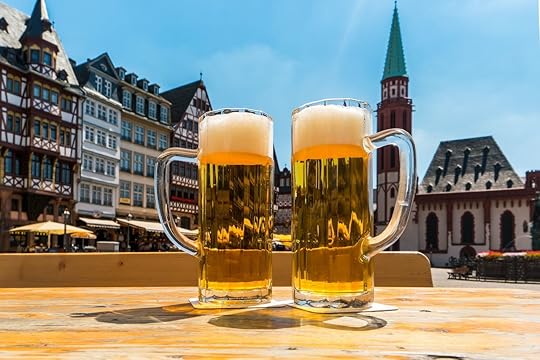
Germany has some strange laws. It’s forbidden to make noise on Sundays, for example, and it’s illegal to run out of gas on the Autobahn. And then there’s the law governing one of the country’s most famous exports: the Reinheitsgebot, or the beer purity law.
“Thou shalt use no other piece than barley, hops, and water for making beer,” decreed Wilhelm IV, Duke of Bavaria in 1516. This rule was created as part of a general beer tax law for two key reasons: to protect the availability of grains and wheat for bread, and to keep ingredients out that might disguise a rotten beer.
This 1516 law has remained largely unchanged over its 500-year history. The most notable updates are the addition of wheat and yeast, the latter of which was only discovered in the 19th century. A Bavarian politician in the early 1900s coined the term we use today, Reinheitsgebot, a term which has developed into a household name among Germans, beer lovers, and brewers as a marker of quality and consistency. Even outside Germany, some breweries have adopted the Reinheitsgebot standards as part of their marketing, such as Bierstadt Lagerhaus in Denver, Penn Brewery in Pittsburgh, and Namibia Breweries in Windhoek, Namibia.
It’s fair to say Duke Wilhelm probably never imagined his simple tax law would go on to become a trademark of the world-renowned German beer scene, but hey, when a brew is built on the promise of simple, quality ingredients, it’s bound to catch on.
Understanding German beer

Photo: Usoltsev Kirill/Shutterstock
German brewers are famous for their lagers, which are beers that use bottom-fermenting yeast and take more time and temperature control than top-fermenting ales. Pilsner is the most widely drunk variety, as well as helles, bock, and the seasonal marzen that’s popular at the country’s biggest beer festival, Oktoberfest. You can also find regional beer styles around the country that follow the Reinheitsgebot principles such as the kölsch in Cologne and the rausch in Bamberg.
But the law isn’t equal across the country, according to Bavarian beer lover Christian Klemenz, the CEO and founder of speciality beer shop Bierothek, which has locations around Germany.
“Most breweries do follow the law, however there is a difference in how the states apply the law,” he says. “Bavaria is notorious for applying the law very strictly. It’s very difficult and rare to get an exception to the law there. In other areas like Berlin, it’s easier for a brewery to approach the authorities and get permission to make a beer that doesn’t adhere to Reinheitsgebot.”
Even the majority of craft brewers in the burgeoning German craft beer scene adhere to the Reinheitsgebot, which can feel limiting when competing globally against craft brewers that are pushing the boundaries with added flavors and experimental ales.
“There is a discussion within the craft beer scene that they want the law to change or to be adapted at least,” says Klemenz. “They want more flexibility.”
While some argue for modernization, fifth-generation brewer Michael Miller from Schwanen Brewery believes the four ingredients are all you need to make a delicious drink. Brewers just need to tap into their creativity.
“We have over 70 types of malt, over 300 types of hop, over 150 different types of yeast, and all the different small steps in the brewing process such as temperate, time, amount, and ratios,” Miller says. “So if you can’t manage to brew your own unique beer, you shouldn’t be a brewer.”
In Germany, varying commitment to the Reinheitsgebot

Photo: RudenkoStudio/Shutterstock
Recently, regulators introduced small adaptations such as allowing the use of natural sugar for flavor and colors. For example, if a brewery brews a lighter beer, it’s allowed to add a beer concentrate to make it darker. While this sounds artificial, it is — slightly controversial — all above board according to the current Reinheitsgebot definition.
To ensure brewers are staying honest, inspectors regularly inspect breweries, take samples, and purchase beers to test the contents in a lab setting. While brewers are not required to label their beers as following the 500-year guidelines, many choose to add the Reinheitsgebot stamp as a marketing tool.
With beer purity as its core, what the German beer scene lacks in sexiness it makes up for in tradition and consistency. But it does make you wonder: Is the oldest food law in the world still valid? Are the principles of the Reinheitsgebot hindering or helping the German beer scene?
Depending on who you ask, you’ll get different answers. Klemenz from Bierothek believes that there should be some small adaptations to ensure all brewers are on a level playing field.
“I would definitely be in favor of some reform or adaptation according to its basic idea,” he says. “The basic idea of purity, as the name suggests, makes a lot of sense. But the way the law is used right now is not 100 percent aligned with the basic idea. And because it’s such a strong trademark both within and outside Germany, I would definitely not be in favor of getting rid of it, but there’s definitely room for improvement.”
Miller, on the other hand, says it’s such an important part of Germany that it needs to be protected.
“When you are a brewer in Germany you have to save the history and bring it to the future, and the beer purity law isn’t a law that stops you from thinking of new ways to brew beer,” he says. “I hope the law stays like it is. The European courts say it’s a traditional law so we need to save it. I think we can save it, but we have to fight for it.”
Whichever side of the debate you’re on, one thing is clear. Beer culture is deeply ingrained in German identity. And for beer lovers, it’s a bucket-list destination.
Where to drink Reinheitsgebot beer in Bavaria

Photo: Takashi Images/Shutterstock
Bavaria, the region with Munich as its capital, is home to 667 breweries at last count. Due to the strict upholding of the Reinheitsgebot, if you want to taste German beer at its purest, your first stop should be here. Along with the big companies like Hofbräu, Augustiner, Löwenbräu, Paulaner, and Hacker Pschorr, there are plenty of smaller breweries worth a visit.
Rittmayer Brewery: If you want to try German craft beers that still adhere to Reinheitsgebot, Rittmayer is the place for you.
Irsee Klosterbrau: In picturesque Allgäu, Irsee brewery is worth visiting to taste its traditional mild-spicy monastery beer (and stay overnight in the converted rooms). There’s also a museum, and you can go on a guided tour of the brewery.
Hotel Brauereigasthof Aying: Take part in a beer tasting or a beer and food paired dinner at the family-run Ayling brewery and guesthouse located in Upper Bavaria.
Weihenstephan: It’s recognized as the oldest operating brewery in the world, and produces a delicious hefeweizen, doppelbock, and kellerbier made using a recipe from 1516.
Erdinger: As one of the world’s largest brewers of wheat beers, a trip to Munich isn’t complete without a stop at Erdinger. Join a tour to watch master brewers produce the liquid gold then take a break in the restaurant and enjoy the Bavarian specialty: white sausages, pretzels, and crisp wheat beer.
Where to drink Reinheitsgebot beer outside Bavaria
Ehingen’s Schwanen Brewery: Sleep in rooms made to replicate a beer crate and wake up to the smell (or taste) of fresh beer. Then explore the town of Ehingen on a beer hiking trail and wander between four traditional independent breweries, the oldest of which dates back to 1384.
Bamberg’s Spezial Brewery: To try Bamberg’s famous smoky rauchbier, you have to be within 9.3 miles of the city so you might as well stop by the brewery and see how it achieves its smoky flavor and then stay overnight.
Black Forest’s Rothaus: Set deep in the Black Forest, Rothaus produces delicious, cult-status beer with sustainability at its core. Wastewater treatment, woodchip and solar thermal energy, and locally produced green energy means the brewery is almost carbon-neutral. You can even hitch a ride on the Rothaus Express train around the local area before enjoying a refreshing Tannenzäpfle pilsner.
Berlin’s Eschenbrau: Combining the traditional long wooden tables, a lively summer beer garden, and Berlin’s city vibes, Eschenbrau is a welcoming haven for beer lovers. A mix of classic flavors and more aromatic hops produces a strong lineup of beers, all brewed according to the Reinheitsgebot. 

More like this: 7 tasty traditional dishes you need to try in Bavaria
The post How a 500-year-old law makes German beer what it is today appeared first on Matador Network.

Amsterdam Light Festival 2019
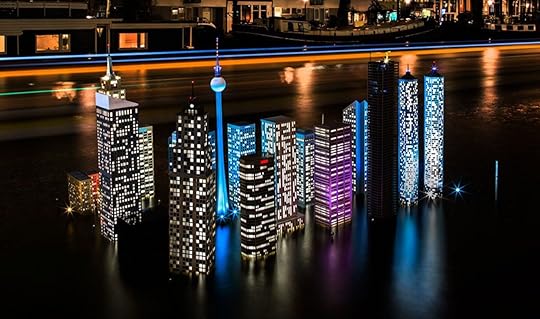
Amsterdam’s canals are a good reason to visit any time of year, but for the past several winters, they’ve been extra striking thanks to the Amsterdam Light Festival. Now in its eighth edition, the festival is a highlight of the Dutch holiday season that sees the capital city’s famous waterways dressed up in brilliant light installations for 50-plus dark, chilly evenings.
Domestic and international artists from more than a dozen countries have contributed to this year’s exhibition. More than 20 works are currently on display across the waterways of Amsterdam’s east side, including Amstel, Oosterdok, and Nieuwe Keizersgracht. This year’s theme is “Disrupt!” — according to the festival’s website, it was chosen to inspire art that “questions fixed assumptions, provokes new discussions, encourages people and organizations to take action, and makes previously unknown possibilities visible.”
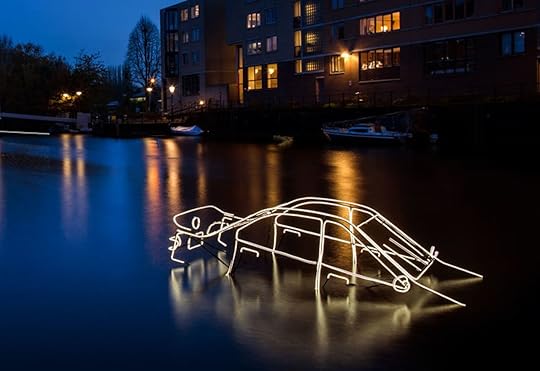
Photo: Amsterdam Light Festival
Some artists have taken the theme as an invitation to get political, particularly where climate change is concerned. This year’s installations nod to everything from rising sea levels and natural disasters to technology and human conflict. One work by a Swedish design studio, “Atlantis,” depicts the skyline of a half-submerged metropolis made up of the world’s tallest and most iconic buildings, including the Empire State Building in NYC. Another, “Surface Tension,” resembles a car sticking out from a canal, while “Big Bang” is of a massive, blue-lit bomb.

Photo: Amsterdam Light Festival
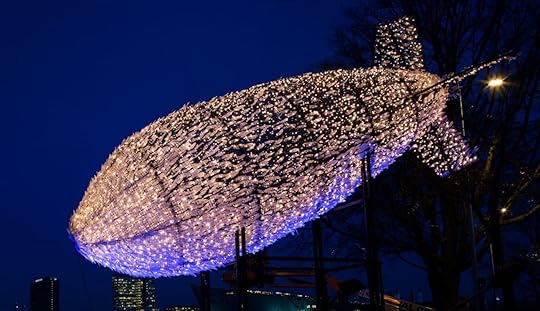
Photo: Amsterdam Light Festival
Anyone currently in Amsterdam, or who has plans to visit before January 19, 2020, can plan a self-guided tour of the installations with the help of the Amsterdam Light Festival’s website. You can also book an evening canal cruise to see the installations up close. 

More like this: 11 American cities with surprising street art scenes
The post This year’s Amsterdam Light Festival embraces the reality of the climate emergency appeared first on Matador Network.

New Zealand overtourism
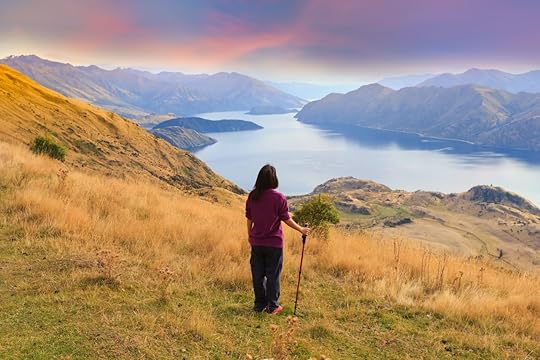
New Zealand is paying the price for its natural beauty. More and more visitors have been traveling to New Zealand each year, and the growth is threatening to ruin the very landscapes and peacefulness people are coming to enjoy.
Simon Upton, the Parliamentary Commissioner for the Environment, explained, “The sheer numbers of people are eroding the sense of isolation, tranquillity and access to nature that many overseas tourists seek when visiting New Zealand. We need to ask, are we in danger of killing the goose that laid the golden egg?”
According to Upton’s latest report, the tourism sector in New Zealand is set to increase to 10-13 million visitors per year by 2050. The report says that while tourism is often considered a harmless industry, pressures from overcrowding have negatively impacted six main areas:
Visitor density and loss of natural quiet
Water quality degradation
Solid waste generation and management
Infrastructure development and landscape modification
Biodiversity loss and biosecurity risk
Greenhouse gas emissions
More than ever, lines of selfie-taking tourists are appearing on mountaintops, roads are clogged with traffic, and waste is plaguing roadsides and parks. The issues are particularly evident at Mount Cook, Tongariro Alpine Crossing, and Mount Roy.
The social media queue pic.twitter.com/hRj6kBXypS
— Lukas Stefanko (@LukasStefanko) November 25, 2018
Professor Michael Lueck, a tourism expert at Auckland University of Technology, said, “It appears that the main problem is the sheer number of tourists, and we need to look at slowing this growth […] it would be fairly easy to, for example, limit the number of cruise ships coming into the country.”
While no policy solution was brought forward in the report, quotas for visitors to the country’s most popular spots could be part of the future of tourism in New Zealand. 

More like this: The destinations that are the most at risk of overtourism
The post New Zealand on track to become as crowded as Venice says report appeared first on Matador Network.

December 18, 2019
Romania after the 1989 revoultion
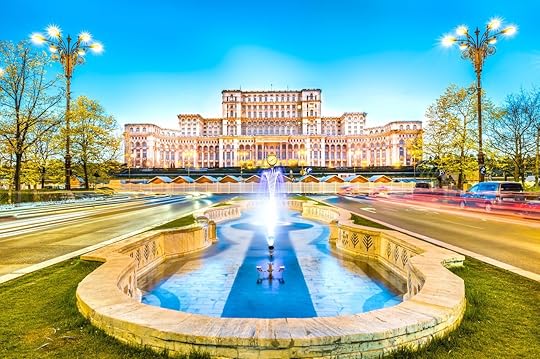
On December 17, 1989, the flame of Romania’s Revolution against communist rule was ignited by the first street demonstrations in the border city of Timișoara. Until then, due to the severe oppression of General Secretary Nicolae Ceaușescu’s communist regime and security, Romanians hoped for such a change only by witnessing what had been happening in the neighboring socialist countries. The action in Timisoara was met with violent force by the military, with the deaths that followed sparking national outrage and bringing Romanians into the streets in droves. Other demonstrations followed in big cities across the country, culminating in the capital of Bucharest, when the dictator Ceaușescu and his wife fled on December 22.
Following the revolution, the communist regime collapsed and an interim government took power. The Ceaușescu couple, captured almost immediately by their own military, was summarily judged and sentenced to death. Their execution took place just a few days later, on December 25, capping an eight-day revolution and the only fatal overthrow of a communist government that took place during that year of revolt across the Eastern Bloc.
Romanians hoped their country would quickly reach the development level of Western European countries like England and France. However, in 2019, 30 years after the revolution, this hasn’t happened yet and Romania is still considered a country under development.
That’s not to say that things haven’t changed in those 30 years, however. Here are some of the most important changes that have occurred in this timeframe, what still needs to change, and what many of us Romanians think of them.
1. First and foremost, there’s freedom.
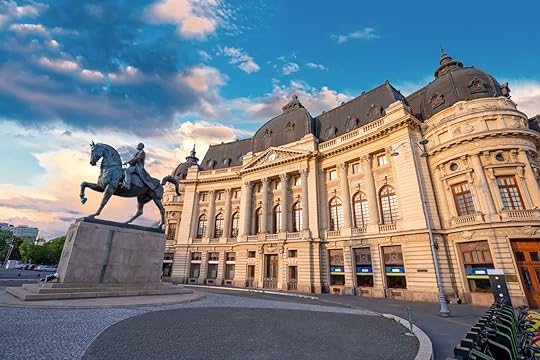
Photo: stoimilov/Shutterstock
After the revolution, Romanians gained a longstanding wish: freedom. Free elections. Freedom to travel anywhere in the world. Freedom of religion. Freedom to work outside of the country. Freedom to pursue studies in the world’s most prestigious universities. Freedom of expression. After more than 40 years of oppressive communism, during which time Romanians lived under constant scrutiny from the Securitate, Ceausescu’s secret police, and watched as their government squandered away the standard of living across the country, this freedom was seen as a true blessing for us.
I was a teenager when the revolution occurred. The first thing I remember was that we didn’t have to wear uniforms to school anymore. The students were so happy, as we finally had the freedom to wear whatever we wanted, such as jeans and colorful T-shirts. This was a dream come true for many teenagers; however, not everybody could buy fancy, quality clothes. Plus, the shops that sold the latest fashion styles were few at that time. Still, knowing that it could be possible and that we had the choice to do so was an incredible feeling.
2. Trust in government is still low but looks to be on the rebound.

Photo: Bogdan Vija/Shutterstock
A few months after the overthrow of the communist regime, Romania’s first free national elections in more than 50 years took place on May 20, 1990. The National Salvation Front, a group dominated by former communists that had run Romania since the revolution, won the elections. Opposition parties lacked the resources and time to organize an effective alternative.
Despite the gains of the revolution, the victory of the National Salvation Front remains a low point to many Romanians. Thirty years later, the quality of the political class is still rather low. Most politicians seek personal advantages and control of the public funds. Earlier this year, the country’s most powerful politician, Liviu Dragnea, was sent to prison for instigating abuse of his office. One outcome of the ongoing corruption is that every time we have elections, many people aren’t motivated to vote due to the lack of competent candidates. In 2019, the turnout for the presidential elections voting round was 49.87%, the lowest since the presidential elections began in 1990.
Civic awareness is growing, though, with the hope that this will put pressure on the political class and help to eradicate corruption. After many parliamentary procedures, the government of the Social Democratic Party (perceived by many as a follower of the communists) has been replaced with one led by the National Liberal Party on November 4, 2019. An important and positive reform of the country is expected.
3. The government’s inefficiency in education and healthcare continues.

Photo: Sebastian_Photography/Shutterstock
Thirty years after the revolution, the process formally known as Educational Reform is ongoing, but the level of education has lowered considerably. Many new, private universities have appeared on the market, but their quality level is pretty low when compared to those in Western Europe or the United States. It is easy to graduate and get a diploma if you pay your student taxes. The statistics show that in 2019, the percentage of functional illiteracy of young people in Romania was 44 percent on average — a disappointing result compared to 2015. Thus, Romania is one of the poorest European countries in terms of education.
Many state hospitals (especially in the province) also display a discouraging image. They lack quality equipment and medication and have poor conditions for patients. Speak to a Romanian about healthcare after many failures and scandalous stories, and you’re likely to hear something along the lines of, “You go to the hospital for certain illness, and there you get ill of something else.”
On the contrary, private hospitals offer Western European standards, but they are pricey and compulsory health insurance doesn’t cover these services. As such, most Romanians can’t afford to use these private hospitals.
4. Human rights and development have progressed since Romania joined the European Union and NATO.
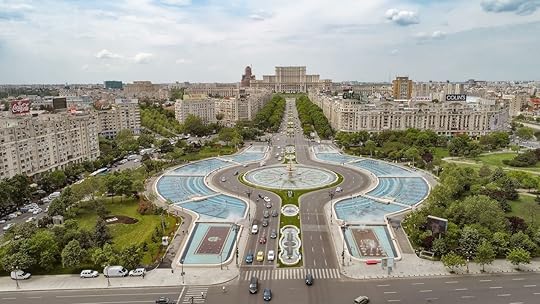
Photo: Paul Antonescu/Shutterstock
In 2004, Romania set a strategic partnership with the USA and became a NATO member. Three years later, on January 1, 2007, Romania entered the European Union, an event that has enforced a set of rights and obligations aimed to secure the country’s development in the right direction. This has included the possibility of accessing important European funds for carrying out development projects with high social resonance, such as improving the country’s poor road infrastructure. These projects are a work in progress, but belonging to the EU and NATO has given a general feeling of stability and of being both defended and protected. As such, Romanians are among the lesser of Euro-skeptics.
5. Society has become highly polarized.

Photo: Hurghea Constantin/Shutterstock
Romanian society has gradually become strongly polarized, politically and socially. A small number of rich people have experienced much of the available gain in living standards since the revolution, versus the many who live below the poverty threshold. This is especially true in rural areas, where approximately half of the population lives in poverty. The agricultural activities on small rural properties have become unprofitable without a suitable protecting legal framework. To compensate this situation, young people are locking their houses in traditional villages and moving to nearby towns hoping they can make a better living there.
Bucharest has the largest concentration of luxury and opulence. The country’s other big cities of Cluj, Timișoara, and Brașov closely follow its model. In these cities, one can find big brands, business offices, malls, and quality services. For this reason, travelers who start their trip through Romania in one of these cities are tempted to judge the country’s situation based on these appearances. The truth is that if you want to experience Romania as many Romanians do, you have to go to its villages, as long as they still exist.
6. Many still struggle to afford daily necessities.

Photo: Slatan/Shutterstock
To truly grasp how things have changed since the revolution, it helps to speak with those who experienced the full brunt of communism. My parents, Dorel and Irina Marchian, were born right after WWII and have lived half of their life in communism. “In communism, we had a secure job and salary, but the shops were empty and we had a hard time finding even food,” they told me recently. I recall such memories from my childhood when my mother would send me to the only shop in the neighborhood in an attempt to collect our monthly ration of sugar and oil.
After the revolution, the situation has gradually changed for the better. Shops now offer a wide range of foods and products. However, due to small salaries or insufficient pensions, many retirees and employees still experience difficulties acquiring these goods for use in their daily life. Many people are in debt and live from paycheck to paycheck. “Now, the shops are full of anything you can dream of, but we don’t have money and we can’t afford even the basics.”
7. Certain industries are rebounding, but many young Romanians are emigrating abroad.

Photo: Yauhen_D/Shutterstock
Soon after the revolution, most of the country’s major industry disintegrated. Jobs in mining, chemical processing, oil, and production were lost. Old factories and yards have been abandoned, and most of the technical products are now imported. But in a few fields, Romania has managed to keep its excellence (and jobs). For example, Dacia cars, now rebranded under Renault, has become very popular in many countries. Romania is also known as a real power in the IT field. In many other fields, private start-ups are trying to contribute to a modern economy, with a particularly heavy focus on the country’s tourism industry and ecological agriculture.
Many Romanians have left the country in search of a better life and better-paid jobs. According to the Romanian paper Business Review, nearly 3.4 million Romanians have emigrated since 2008. Among these are especially well-trained young people, a true brain-drain in various fields from doctors and engineers to researchers. They send money back home to help their families and relatives, and many continue to visit Romania as often as possible. The perception of the country’s expats of their homeland is one of slow but positive development, and many report a desire to come back “home” at some point.
8. Religious traditions surrounding Easter and Christmas have been reinvigorated.
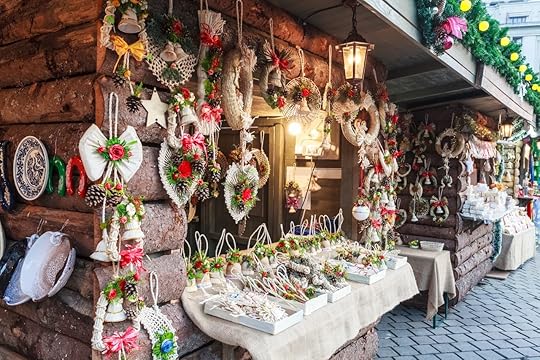
Photo: Cristian Balate/Shutterstock
Since the fall of communism, freedom of religion has allowed people to return to their traditional customs. As a largely Christian nation, Easter and Christmas are the two main celebrations held each year. Religious rituals had been forbidden during the communist regime, though many people continued to perform their practices in secret.
Nowadays, Christmas is celebrated by all ethnic groups throughout the country. Christmas fairs have become popular in the major cities and European travel agencies include on their list many of Romania’s holiday markets in Bucharest, Sibiu, Brașov, Cluj, and Timișoara. To learn more about the traditional Christmas customs practiced in Romania, witness the folk dancing and caroling that takes place alongside traditional dishes like sarmale and cozonac in the countryside.
Easter is a bit different in Romania, and each religious group celebrates it on different dates. In Transylvania, Catholics celebrate Easter one week before the Orthodox in the rest of the country. This is proof of religious tolerance, and for travelers, it is a way to experience a broad range of local customs and liturgical services.
9. The full truth about the ‘89 revolution is still unknown.

Photo: Balate Dorin/Shutterstock
In 2018, the trial of the deaths that took place during the 1989 revolution was finally, and officially, opened. In this process, Romanians hope to find out the truth of what exactly happened during those violent days. Taking advantage of the demonstrations that ignited unexpectedly throughout the country, many believe that the then-new rulers — who were former communists — ordered the army to open fire on protesters. At that time, to disguise this action and justify the term “revolution,” it was suggested that former members of Ceaușescu’s troops tried to protect the dictator, or even that “terrorists” shot the crowds of demonstrators.
As a free nation, we are all hoping the hidden events that led to destruction and more than 800 deaths — some sources claim nearly 1,300 — and more than 3,000 people injured during the revolution will be uncovered.
10. You can still see the marks of the revolution today.
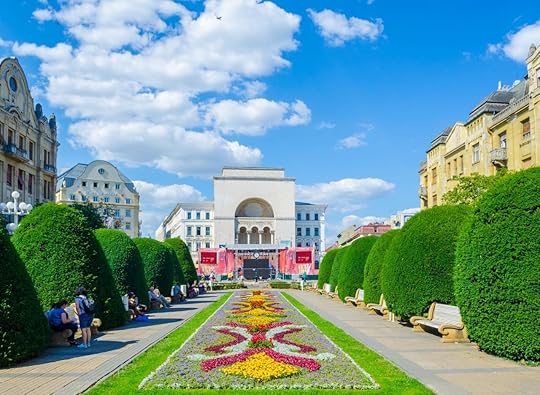
Photo: trabantos/Shutterstock
Since the revolution, tourism development in Romania has decreased due to a reduction in the number of tourists, both from within Romania and from other countries. Nowadays many resorts and hotels built during the communist period stand abandoned. In the big cities of the country, though, you can see marks of the revolution and of the communist architecture so common before it took place. In Bucharest, don’t miss the People’s House, also called the Parliament Palace. It’s one of the largest administrative buildings in the world after the Pentagon (and, oddly, the heaviest) and is representative of the Stalinist architecture of the communist period. The gigantic building is visible from many places in the capital, and it features over 6,000 rooms.
Timișoara is another emblematic city of the country. There, you’ll inevitably explore Victory Square, also known as Opera Square. Victory Square is the central square of the city and was designed at the beginning of the 20th century on the site of the old city fortifications. It became a significant historical place after the bloody events of December 1989, when the protesters gathered there would proclaim Timișoara as the first free communist city in Romania. 

More like this: The ultimate arts trip through Bucharest
The post Thirty years after the revolution, Romania is still rebuilding appeared first on Matador Network.

Undiscovered South American beaches

For half of the world, December to February means frosty landscapes and chilly temperatures, leaving many in search of warmer weather. Fortunately, it’s summer in the Southern Hemisphere where sandy stretches beckon. Sure, there are obvious beachy locations like Rio de Janeiro and Uruguay’s Punta del Este, but there’s much more shoreline to explore. Let’s head off the beaten path to soak up the sun in some of the most spectacular, yet little known, beaches in South America.
1. Mompiche, Ecuador
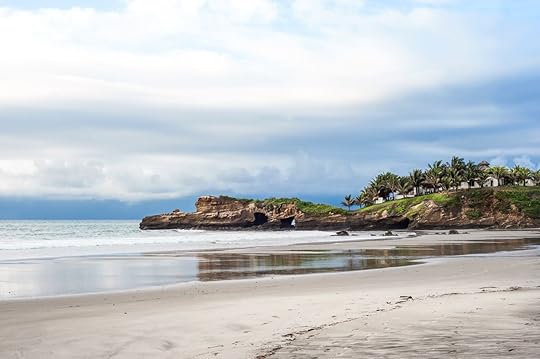
Photo: Ksenia Ragozina/Shutterstock
If you’re in the mood for a sleepy but sultry beach village, head to this isolated cove on Ecuador’s north coast. It’s locally prized for its lush, green coastline, black beach, exposed reef, luminescent tides, and bordering rainforests.
While it’s just over 200 miles from the capital Quito, the drive can take over five hours. That may be why very few travelers venture to this remote spot. But that means that while there are plenty of community tours and activities, the hideaway is particularly nice for those who just want to laze about, soak up the sun, and savor plenty of tasty, cheap seafood. It’s a secret gem for surfing, too.
Quietly tucked 66 miles south of Esmeraldas and 111 miles north of Canoa, Mompiche has low-key amenities and a local vibe make that make it an idyllic spot for a true getaway. December to February is an ideal time for surfing on this subtropical beach when sea and air temperatures both hover in the low 80s Fahrenheit. A great place to crash is at La Casa, which offers beachfront camping and affordable bamboo bungalows.
2. Paracas National Reserve, Peru

Photo: Marisa Estivill/Shutterstock
Despite having more than 1,500 miles of coastline, Peru does not usually top the list of places in South America listed as a beachgoers paradise — even though it has some stunning coastline. In fact, surprisingly few travelers visit Paracas, even if they are visiting Huacachina, a real-life oasis set amidst the sand dunes about 180 miles south of Peru’s capital, Lima. If you were to drive the four hours from Lima to Huacachina, you’d be passing very close to the bay city of Paracas. It’s worth the small detour.
Paracas is a popular beach escape for many Limeños, as residents of Lima call themselves, with luxury resorts, backpacker hostels, and everything in between. Despite the array of offerings, Paracas still has a small-town feel.
You can stay in the town of Paracas, and savor the happening, party atmosphere at the beaches closer to the city. But the real prize is just five miles away, where you’ll encounter totally isolated beach bliss inside the Paracas National Reserve. There’s next to no infrastructure here — it’s just you, the sea, and the sand. You could find yourself completely alone on endless sandy stretches hanging out with flamingos and dolphins.
If you opt to wild camp without services in the reserve, be sure to bring all of your own provisions. Alternatively, Bamboo Paracas is a great mid-range choice for accommodations. It’s the closest resort to the nature park and has eco bungalows and pools, along with windsurfing and paddle boarding.
3. Puerto Valdes, Argentina
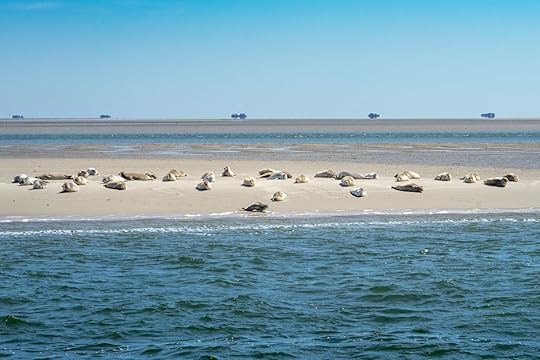
Photo: Wirestock Images/Shutterstock
Like Peru, Argentina is not widely renowned for its beach scene outside of a few prime city escapes south of Buenos Aires. With a closer look, though, many travelers are delighted by the pristine coastlines of Patagonia. The sub-antarctic region is actually quite pleasant in January and February and is home to some of the most spectacular beaches in South America.
For starters, head to Puerto Valdes in the northernmost part of Patagonia and the only township on the Valdes Peninsula. Here, it’s all beaches, untouched nature, and rare wildlife encounters with creatures characteristic of the region like penguins, elephant seals, sea lions, right whales, orcas, and more.
The small-town hub offers just the right balance of nature and amenities, so you can stay comfortably with direct access to the best sights and sounds of the peninsula. Think snorkeling, paddle boarding, whale watching cruises, and safaris. A great, beachfront option that has earned plenty of recognition for its environmental practices is Oceano Patagonia.
4. Punta del Diablo, Uruguay

Photo: Olaf Speier/Shutterstock
It’s no secret that Uruguay is a full-fledged beach haven and a great winter escape. The beaches of Punta del Este and Jose Ignacio are hotspots for wealthy Argentines and celebrities from the Northern Hemisphere who want to celebrate New Years Eve in the middle of summer.
But Uruguay also has some lovely, quiet stretches along its 410 miles of epic coastlands as well. Just note that since the country is so far south of the equator, summer is the direct opposite of the seasons in the Northern Hemisphere. It gets cold in its winter months, so time your travel when it’s deep winter up north. For the most part, the seaside is enjoyable from November to February, with the warmest days in December and January.
That said, the farther north towards the frontier with Brazil that you go, the warmer it gets. This is a blessing, since the most natural, easily accessible beach is in Punta del Diablo. In contrast to Punta del Este, this is one of those slow-paced villages perfect for doing nothing more than relishing the sand and sea — and maybe doing some surfing as well. You can get right onto that sand with a stay at the El Diablo Tranquilo hostel, which has dorms, private rooms, and a wide-open ocean view from its communal spaces.
5. Pan de Azúcar National Park, Chile

Photo: Elisa Locci/Shutterstock
If you’d like to see a side of Chile not widely documented but overflowing with endless beaches, stick to the northern territories. This region feels like one of the most remote of this list. It’s worth the trek here if you combine it with a visit to the Atacama Desert. From San Pedro de Atacama it’s a seven-hour drive, but Chilenos are accustomed to driving long distances to get around their elongated country. .
Despite the fact that this is a coastal desert region, it’s cool here year-round, in part because of the chilly Humboldt current that flows north from Antarctica. The warmest days from December to February reach only into the upper 60s Fahrenheit. The massive Pan de Azúcar National Park is still a wonderful place to unwind and disappear into the scenery.
The beaches are stunning, isolated white banks with impressive views of the islands, cliffs, and mountains in the distance. It’s also prime territory for wildlife sightings ranging from foxes and chinchillas to Humboldt penguins, pelicans, marine otters, and sea lions. You’ll find many hiking trails and campsites, as well as cabanas and more camping options at the Pan de Azucar Lodge. Beyond that, there are few services except what is found in the small fishing villages.
6. Balneário Camboriú, Brazil
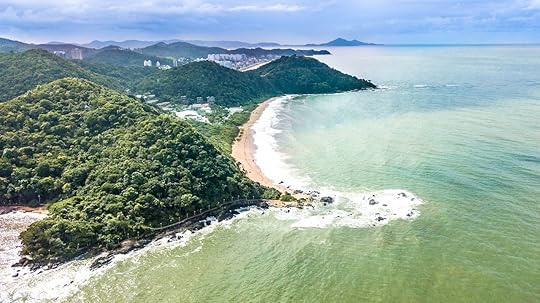
Photo: Marcelo Alex/Shutterstock
A list of South American beaches wouldn’t be complete without at least one nod to Brazil. When seeking out the least obvious places in Brazil, take a chance on the lesser visited southern regions. Many of them haven’t exploded with tourism just yet.
While Balneário Camboriú is not nearly as remote as other locations on this list, you can still beat the masses by heading to this coastal municipality that’s being touted as the new Rio. It’s a major resort city for Brazilian travelers, but the word hasn’t quite reached the international crowd.
The main beach at Balneario Camboriú is a lovely cove with an exquisite highrise skyline and everything you can dream of for an upper-class getaway. Many Brazilian celebrities are known to hide away here, which just adds to the allure. It’s not uncommon to see a yacht or two whizzing by. Among its appealing features are the oceanfront avenue filled with restaurants, bars, and shops, and the best electronic music clubs in the country. Plus it has bike lanes, boardwalks, playgrounds, and a whole mountain dedicated to adventure activities with a zip line and cable cars.
A 10-minute drive also takes you from the main beach to Praia de Taquarinhas, a stunning nook framed by lush greenery. You’ll feel a world away but won’t be far from Balneário Camboriú’s urban pleasures. There are countless places to stay, but a budget-friendly option within walking distance to the main beach is Pousada Villa di Loire. 

More like this: Where to find New Zealand’s most heavenly, and often empty, beaches
The post The 6 most exceptional beaches in South America tourists haven’t discovered yet appeared first on Matador Network.

Mountain gorilla population rising

Mountain gorillas, which are listed as endangered by the International Union for Conservation of Nature, are seeing their population numbers rise. Uncontrolled hunting, disease, conflicts, and habitat loss put the species in danger, but there are encouraging signs that mountain gorillas are thriving. According to a new survey conducted by the Protected Area Authorities in Uganda and the Democratic Republic of the Congo, the mountain gorilla population has now risen to a total of 1,063. It’s not exactly cause for too much celebration, however, as that number is still relatively low, but it’s an improvement on a previous survey from 2008 that had the number at just 680. In 1978 the total population of mountain gorillas in Virunga Massif was at an all-time low of about 240 individuals.
A subspecies of the eastern gorilla, the mountain gorillas survive in two distinct populations. One is confined to Uganda’s Bwindi Impenetrable National Park, and the other is found in the Virunga Massif that stretches across the borders of Rwanda, Uganda, and the Democratic Republic of the Congo. It was in Virunga Massif that Dian Fossey established the now-famous Karisoke Research Center in the 1960s. At the time, mountain gorillas were already heading toward extinction.
Matt Walpole, senior director of conservation programs at Fauna & Flora International, said, “These survey results are undoubtedly good news, yet mountain gorillas remain threatened with extinction […] We have to remain vigilant against threats and build on the success achieved to date by ensuring resources — including from tourism — are properly directed to mountain gorillas and local communities.”
The rebounding population is largely thanks to the extreme efforts of conservationists, some of whom lost their lives to protect the gorillas and local communities in the Virunga Massif. An increasing number of veterinarians are caring for the animals in the wild, park rangers are working hard to deter poachers, and eco-tourism has benefited local economies and given communities an incentive to keep their gorillas safe. 

More like this: 7 animals saved at the 11th hour, and why there is hope for the world’s species
The post Endangered mountain gorilla population is on the rise appeared first on Matador Network.

How to say Happy New Year

Ringing in the new year is a call for celebration around the world. As the clock strikes midnight, friends, couples, and families call out cheers and well wishes for a happy New Year. The year turns over on the Western calendar first in Australia and then around the rest of the world. Some places celebrate with a toast of Champagne, others with a kiss on the cheek, and many with both.
This is how the world says “Happy New Year” and offers a hearty cheers (when appropriate) for good measure.
Africa
Kenya: In Swahili, “Happy New Year” is heri ya mwaka mpya, and to cheers is vifijo (cheers) or maisha marefu (a long life).
Madagascar: The Malagasy translation for “Happy New Year” is tratry ny taona, while a traditional cheers is mirary fahasalamana (good health).
Nigeria: English is the official government language in Nigeria, but there are hundreds of languages spoken. Three of the main languages are Hausa, Ibo, and Yoruba. In Hausa, “Happy New Year” is barka da sabon shekara, in Ibo it’s ezi afọ ọhụrụ, and in Yoruba it’s e ku odun, eku iyedun.
Ethiopia: “Happy New Year” is melikami ādīsi ‘ameti, and a common cheers is letenachin (good health) or simply “cheers.”
South Africa: “Happy New Year” in Afrikaans is gelukkige Nuwe Jaar, and other than saying “cheers,” you can also say gesondheid (to your health).
Asia
China: On Chinese New Year, say xin nian hao for “Happy New Year,” and gān bēi (essentially drink your glass) for cheers. You can also say gong hei fat choy (Cantonese) or gong xi fa cai (Mandarin), which translates to “wishing you great happiness and prosperity.”
Japan: “Happy New Year” in Japanese is akemashite omedetou gozaimasu, and a traditional cheers is kanpai, or “empty your glass.”
Korea: Wish people good fortune in the new year with saehae bog manh-i bad-euseyo, and make a toast with gunbae.
Philippines: “Happy New Year” in Tagalog is maligayang bagong taon. A traditional cheers is mabuhay (long life).
Thailand: S̄wạs̄dī pī h̄ım̀ is “Happy New Year,” while a typical cheers is chok dee.
Europe
Czech Republic: “Happy New Year” is šťastný nový rok, and a toast to each others’ health is na zdravi.
Denmark: The Danish way to say “Happy New Year” is godt nytår, and cheers with skål.
Finland: Wish someone a “Happy New Year” with hyvää uutta vuotta, and follow it up with a cheers by saying kippis.
France: The French say bonne année for “Happy New Year.” A casual cheers is tchin-tchin while a more formal is à la votre (generally, “to your health”). Whichever way you cheers, make sure to look people in the eyes or else it’s bad luck.
Germany: Say “Happy New Year” with frohes neues Jahr, and cheers with prost.
Hungary: Wish a “Happy New Year” by saying boldog új évet. One way to cheers is with egészségedre (to your health), or you can go with fenékig (until the bottom of the glass).
Iceland: Gleðilegt nýtt ár is “Happy New Year,” and a traditional cheers is skál.
Italy: Buon anno is how to say “Happy New Year,” and a typical way to say cheers is with cin cin or salute.
Ireland: You can always go with English, but “Happy New Year” in Irish is bliain nua shona. To cheers with a good Guinness or Irish whiskey in hand, say sláinte (good health).
Netherlands: The Dutch say “Happy New Year” with gelukkig nieuwjaar, and a typical toast is proost.
Romania: “Happy New Year” is an Nou Fericit, and a classic cheers in Romania is noroc (good luck).
Scotland: The Scottish Gaelic way to say “Happy New Year” is bliadhna Mhath Ùr, and cheers is slàinte. On New Year’s, expect at least one singing of “Auld Lang Syne,” written by beloved Scottish poet Robert Burns.
Spain: “Happy New Year” in Spanish is feliz año nuevo, and cheers to health with salud.
Ukraine: Wish people a “Happy New Year” with shchaslyvoho Novoho roku, and cheers with budmo.
North America
Mexico: “Happy New Year” is feliz año nuevo, and a typical cheers is salud (health).
Central America
Costa Rica: Like other Spanish-speaking countries, “Happy New Year” is feliz año nuevo. To cheers, you can use salud or Costa Rica’s motto, pura vida (literally translates to “pure life” but indicates a relaxed, simple lifestyle).
South America
Argentina, Chile, Colombia, and Spanish-speaking South America: In Argentina and Spanish-speaking South America, wish your friends a “Happy New Year” with feliz año nuevo and cheers with salud.
Brazil: “Happy New Year” is feliz ano novo, and a typical cheers is saúde. 

More like this: How to say ‘cheers’ in 50 languages
The post How to say ‘cheers’ and ‘Happy New Year’ in 30 countries appeared first on Matador Network.

How to plan your Europe adventure

You’ve been saving up the cash, you’ve been saving up the PTO, and you’ve been doing plenty of day-dreaming. But it’s time to stop dreaming and start actually planning, because you’re closer to adventure than you realize: When you fly Norwegian from the US, cities like Paris, Rome, Athens, and Oslo are a short-and-sweet nonstop flight away.
For the same amount of time it takes to be a season deep into Netflix (and a season deep into your couch), you could be sipping espresso next to the Colosseum, sailing the Thames, or going eye-to-eye with Van Gogh. And not only is it closer than you think, it’s simpler than you think, too. Here’s how to begin.
Start at Norwegian.com.
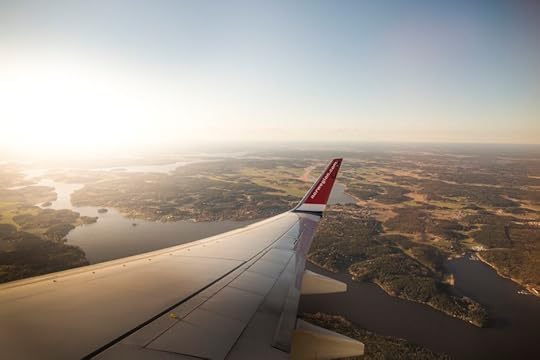
Photo: Norwegian Air
If Benjamin Franklin really said “time is money,” he would’ve booked his tickets through Norwegian. The flights are always reasonable, sure, but it’s their website’s savvy interface that’ll make you a believer. Type in your home airport (if it doesn’t automatically show up), click “direct,” and up pop all your options for a quick zoom across the pond (and their prices by month!). Time saved searching for flights, time saved in the air.
Leave the challenges for when you’re on the ground translating rail maps, calculating complicated currency exchanges in your head, or suffering through your own terrible accent. Booking your flight should be the easy part.
Don’t stop at the flight to Europe.
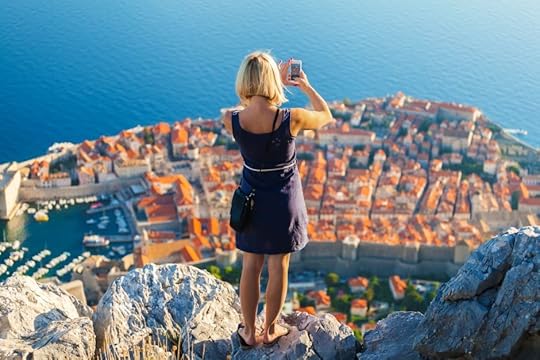
Photo: Shutterstock/Lals Stock
Cooking for two isn’t twice the work (or money!) of cooking for one, and the same goes for traveling. Now that you know how to get yourself to Madrid, Paris, Amsterdam, or any other European hot spot, you’ve done most of the work. Don’t stop there! You’re just a quick flight away from dozens of other Norwegian destinations. For instance, from your first stop at London-Gatwick, you could be in Helsinki, Gothenburg, Bergen, or Alicante in a couple hours (and not much more than $100).
You’ve already put in the time and money to fly across the entire Atlantic — might as well take a second loop around Norwegian’s website to see where you can go from there. It’ll likely be cheaper and faster than you think.
Start a group chat with your friends and get planning — together.
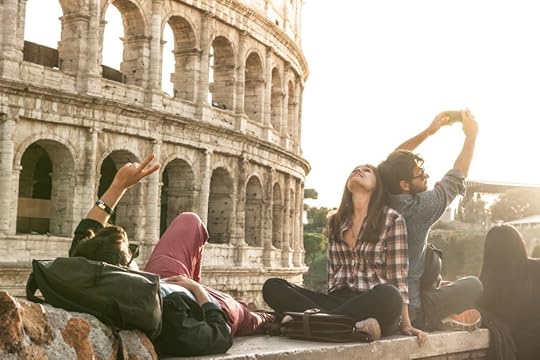
Photo: Shutterstock/Wine Donuts
WhatsApp, Snapchat, Facebook, Instagram — whatever your platform of choice, give that group chat a name and get to brainstorming. What’s a destination you can all fly direct to and that’s in everyone’s budget? Norwegian’s website can help you narrow it down.
There are two ways you can all be looking at the same information: 1) The destinations page, where the nearest Norwegian-serviced airport to you should automatically pop up, showing you all the options in list form, and 2) the route map, where a map of the planet lights up with accessible destinations and their prices. Unlike third-party websites, you won’t have to try and follow which flights your friends are seeing — you’ll all be looking at the same straightforward info.
Don’t write off your travel dreams because you can’t afford it.

Photo: Shutterstock/Ekaterina Pokrovsky
If you time it right, you can fly from New York to Amsterdam for $140 on Norwegian. You can fly from Boston to London for $125. There are serious, serious deals on Norwegian’s site. Don’t let the travel budget woes get you down.
Even if you’re just in the “wondering” stage, get over to Norwegian.com and scope out their Low Fare Calendar. Once you enter your home airport and destination, you’ll be taken to a view that gives you one price per day, highlighting the lowest fares in red. You’ll know exactly when it’s cheapest to fly and exactly when it’s the most expensive — there’s no hiding what kind of fare you’re getting. Snaps for 100% transparency!
Know that you and your friends can budget independently.
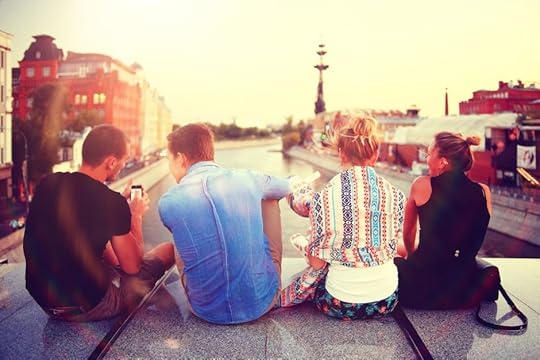
Photo: Shutterstock/Kichigin
Maybe some of your friends are high-falutin’ stock-market gurus, and they need some bells and whistles for their flight experience. Tell them they can nab Premium fares and sit down to three-course meals, wine, and beer (and all the gate-to-gate WiFi their hearts desire). They’ll be absolutely taken care of on Norwegian.
If you’re more into saving your cash for better hotels and activities once you arrive, Norwegian’s low, no-frills fares can get you over the pond on the exact same flight — fewer three-course meals and definitely less wine, but you’ll still get all the free entertainment and WiFi you need.
Do your last-minute trip planning on board.

Photo: Norwegian Air
You read that right: gate-to-gate WiFi. If you wanted to go off-grid, now is not the time. It is the time, however, to snag those discounted, last-minute hotel reservations or tour coupons.
While you’re at it, be sure to check out city-wide passes for your destination, and if you’re going to any big-ticket stops (shout out to the Louvre), definitely buy your tickets online in advance. You’ll be extra grateful for the free in-flight WiFi when you look back at the “Buy Tickets” line and see it’s a city-block long.
Pro tip: Book your rental car, hotel, and tours with Norwegian partners — like Avis, Hotels.com, and GetYourGuide — and you’ll bank some serious Norwegian Rewards just for rounding out your itinerary, if you’re enrolled. Speaking of…
Sign up for Norwegian’s “Reward” program to start saving for your next trip.

Photo: Im Yanis
It’s basically free money, so why would you not? Every time you take a Norwegian flight, book partner hotels and rental cars, or shop online, you could be earning a discount toward your next trip with Norwegian. Here’s how it works:
It’s a cash-back program. You receive CashPoints for every dollar spent, which then act as credit — no minimum spend required! — towards your next Norwegian flight.
Fly six times with Norwegian, and you’ll get a capital-R “Reward,” good for fast-track access, free seat selection, or free checked baggage.
The Norwegian Reward World Mastercard© comes with no annual fee and no foreign transaction fees**. If you fly across the pond a lot, this may be something to consider (but it’s certainly not required for enrollment in the Reward program).
It’s free to sign up — consider it the first step toward your next European adventure. 
The post How to plan your next European adventure on Norwegian Air appeared first on Matador Network.

Best architectural projects of 2019

New constructions, whether they be for practical use like apartment buildings and airports, or the home of art and cultural displays like museums, have the potential to be so striking that they can liven up a skyline, transform a city, and become symbols of creativity and innovation. In 2019, architects around the world have done just that by creating amazing structures that have already left their marks; some have focused on sustainability, others concentrated on an efficient use of space, and all have made sure to include jaw-dropping aesthetics. Here’s a look back at the craziest architectural projects that opened in 2019.
1. Under — Båly, Norway
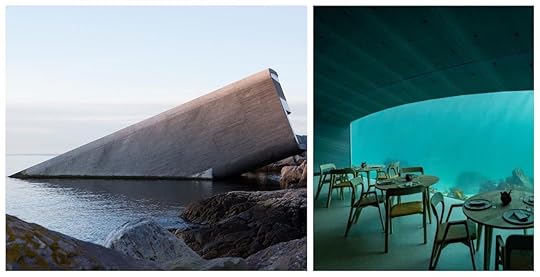
This aptly-named restaurant is located in the Lindesnes region on the southern tip of Norway, and while the entrance is aboveground, you’ll be dining more than 16 feet under the North Atlantic Ocean’s surface. Europe’s first underwater restaurant, Under was designed by Norwegian architecture firm Snøhetta, with concrete walls built to withstand rough waters and function as an artificial reef as time goes on. The restaurant, which accommodates up to 40 guests and has views of the seabed, also serves as a research center for marine life, with cameras and measurement tools affixed to the exterior walls to help scientists observe the area’s marine ecosystem.
2. Clymb — Abu Dhabi, United Arab Emirates

Photo: CLYMB Abu Dhabi/Facebook
The United Arab Emirates is no stranger to record-breaking architectural feats, so it’s hardly surprising that Abu Dhabi unveiled the world’s tallest indoor climbing wall last November. Named The Summyt, the 141-foot-high climbing wall is part of indoor adventure venue Clymb Abu Dhabi, which also features the world’s biggest indoor skydiving flight chamber. Located on the man-made Yas Island, Clymb is pretty tough to miss. The building is an angular, multi-faceted structure that seems straight out of a sci-fi movie.
3. The Wave — Vejle, Denmark
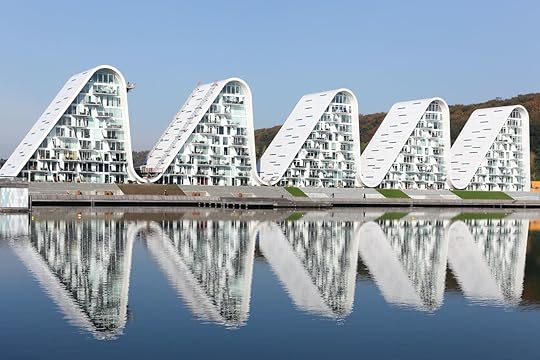
Photo: ricochet64/Shutterstock
Living in this apartment complex is very cool, if you don’t mind waking up to people taking photos of your windows every morning. Gawking tourists just comes with the territory, however, when you decide to live in The Wave, a waterfront apartment complex in Vejle, Denmark. Designed by Henning Larsen Architects, the building is comprised of five wave-shaped towers covering three and a half acres and a public pier. Although each wave may appear separate, they’re all connected by a single unifying ground floor. The complex, which was started in 2006 and finally completed in early 2019, is meant to represent Vejle’s seafaring heritage, as well as pay homage to the surrounding hills and fjord.
4. The National Museum of Qatar — Doha, Qatar

Photo: Little Adventures/Shutterstock
The exterior of the National Museum of Qatar was obviously inspired by the desert rose, a crystal group commonly found in desert regions. With curved, sharp-looking disks, intersecting at various angles, the museum designed by architect Jean Nouvel is a stunning addition to the Doha landscape. The museum, which opened in March 2019, contains a 220-seat auditorium, a research center, laboratories, a rooftop restaurant, and even a landscaped park filled with Qatar’s indigenous plants. Inside, it’s just as amazing; the museum, which spans nearly one mile, is organized in three chapters — Beginnings, Life in Qatar, and the Modern History of Qatar — in a remarkable, curvy interior.
5. The Forest Tower — Denmark
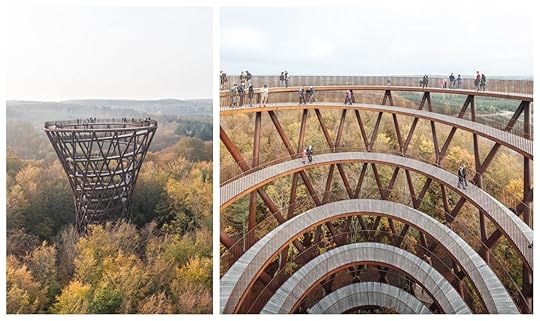
Photo: Camp Adventure/Facebook
In one of the most elegant marriages of technology and nature, architecture studio EFFEKT designed this futuristic-looking structure to give visitors a true 360-degree view of the treetops. Located about an hour south of Copenhagen in a preserved forest, the spiral walkway is connected to a 148-foot-high observation tower, and is split into two routes: a high route that passes through the older part of the forest and gets you to the top of the tower, and a low route passing through the younger part. The best part of the whole experience is that the walkway is so wide and slopes upward so gently that it’s accessible to all, including those with mobility issues and parents with strollers. The Forest Tower is part of Camp Adventure, a climbing-con-obstacle course park that includes zip lines and trapezes. The treetop experience has been welcoming visitors since spring 2019.
6. The Vessel — New York, United States

Photo: Francois Roux/Alex Cimbal/Shutterstock
The new centerpiece of New York City’s Hudson Yards neighborhood, the Vessel is an interactive landmark that will have visitors craning their necks skyward. The 150-foot-tall spiral staircase was designed by Thomas Heatherwick of Heatherwick Studio as a focal point from which both New Yorkers and tourists can enjoy new perspectives of the city. The Vessel has 154 interconnecting flights of stairs, nearly 2,500 steps, and 80 landings, providing visitors with a myriad of angles for viewing the Big Apple. The Vessel is open every day of the week from 10:00 AM to 9:00 PM, though it closes at 7:00 PM until the end of February.
7. L’Arbre Blanc Tower — Montpellier, France

Photo: L’Arbre Blanc
This gleaming white tower is a unique addition to the landscape of the city of Montpellier in southern France. L’Arbre Blanc (The White Tree), designed by Sou Fujimoto in conjunction with OXO Architectes and Nicolas Laisné Associés, is a residential building that contains 113 apartments with cantilevered balconies, extending from the tower like branches from a tree trunk. On the ground floor is an art gallery and the rooftop has a bar opening on a panoramic garden, both of which are open to the public. The building’s shape is intended to encourage residents to interact with one another, as well as to embrace the outdoors — not a hard thing to do in warm-weathered Montpellier.
8. Daxing International Airport — Beijing, China

Photo: lazy dragon/Shutterstock
In September, China opened the new Daxing International Airport in Beijing, the largest single-building terminal in the world. Designed by the late, world-renowned architect Zaha Hadid to welcome 72 million passengers by 2025, and 100 million by 2040, the airport is nicknamed “the starfish” for its unusual design. The 7.5 million-square-foot airport features service robots patrolling the terminals to help passengers with flight updates, express trains to the city center, and a bright, spacious interior.
9. TWA Hotel — New York, United States

Photo: TWA Hotel
Putting old, out-of-date structures to new, remarkable use is architecture at its best. The TWA Flight Center located at John F. Kennedy Airport in New York was designed by famous architect Eero Saarinen and built in 1962. In 2001, however, the building was shut down and left sitting empty until 2016 when construction on the TWA Hotel began. Two wings filled with 512 hotel rooms, a fitness center, and event spaces were added to the original center, where restaurants, bars, and retail outlets now welcome weary travelers. The TWA Hotel has kept the 1960s vibe throughout and the whole place oozes elegant, retro charm. The icing on the cake of this revitalized structure is the rooftop infinity pool and observation deck. The 63-by-20-foot-long pool allows guests to relax while watching planes take off and land, and it’s even open to non-hotel guests (as long as you have a reservation).


More like this: Baku, Azerbaijan, has the most cutting-edge architecture in the world
The post The craziest architectural projects completed in 2019 appeared first on Matador Network.

Matador Network's Blog
- Matador Network's profile
- 6 followers



